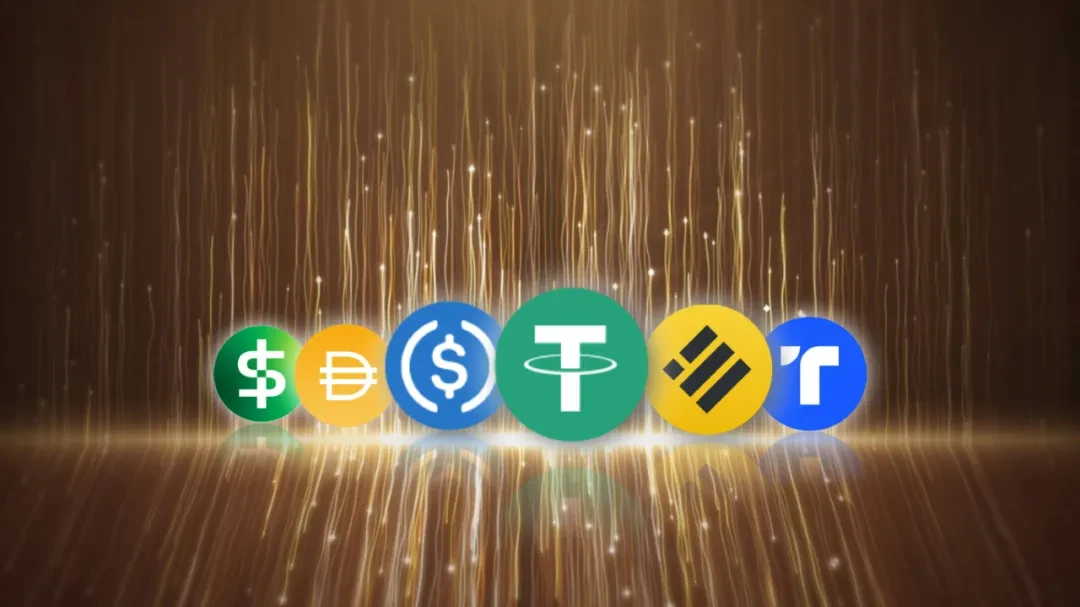The cryptocurrency world cannot exist without stablecoins, just like the West cannot exist without Jerusalem.
Stablecoins are a bridge between traditional finance and the crypto world, providing a stable value storage and transaction medium for the cryptocurrency market with volatile prices. Whether it is cross-border payments, smart contract transactions, or the operation of DeFi projects, stablecoins are playing an irreplaceable role and have become an indispensable part of the currency circle. According to the latest data from Coin Metrics Network Data Pro, the total supply of stablecoins worldwide is close to $161 billion, a figure that is once again close to its all-time high. According to data released by HashKey Group, an overseas cryptocurrency trading agency, quarterly stablecoin transfers have increased seventeenfold over the past four years, from $17.4 billion in the second quarter to $4 trillion. On July 17, 2024 alone, the total transaction volume of the entire global stablecoin market reached $87 billion, accounting for 91.7% of the total cryptocurrency market transaction volume, of which the largest transaction volume stablecoin was USDT, reaching 83.3%.
However, what is overlooked by many cryptocurrency users is that stablecoins such as USDT are issued by centralized institutions and rely heavily on the daily management and operation of centralized institutions, which is essentially no different from traditional bank printing and issuing of currency. Although decentralized stablecoins (such as DAI) were once the hope of the whole village in this field, MakerDAO recently upgraded to Sky Protocol, launched a new stablecoin USDS, and introduced a freezing function. This information has once again triggered debates about the ownership and decentralization of stablecoins, and even disillusionment with decentralized stablecoins.
Disillusionment with decentralized stablecoins?
MakerDAO was once a symbol of the decentralized ideal in the DeFi field. Its DAI is a stablecoin that is not controlled by a central authority. However, with the launch of USDS, this ideal seems to be challenged.
It is reported that USDS may introduce a freezing function similar to the centralized stablecoins USDT and USDC. Under certain circumstances, the issuer of USDS or the relevant governance entity can freeze the users funds, which is obviously contrary to the original intention of decentralization.
*Image source: Sky Protocol official website
In the traditional financial system, banks and governments have the power to freeze accounts, usually to combat crime or respond to emergencies. However, when this freezing function is introduced into stablecoins, it will make stablecoin holders have to face an uncertain future – their funds may be locked on the chain by a centralized institution far away at any time.
With the popularization of blockchain technology, governments around the world are increasingly tightening their supervision of crypto assets. For example, USDT (Tether), as the worlds largest and most widely used stablecoin, is often seen on the Internet in news that it cooperates with regulators to freeze or seize USDT assets in certain specific wallet addresses. For example, in 2023, Tether froze millions of dollars worth of USDT, which were related to certain criminal activities. In an official statement, Tether made it clear: We work with global regulators and law enforcement agencies where appropriate to combat and prevent criminal behavior. The technical principle of this function is based on the control authority of smart contracts. Tether retains the blacklist function authority for USDT contracts, which can add certain addresses to the blacklist and prevent USDT in these addresses from being transferred or redeemed.
*Image source: Tether official website
The designers of USDS claim that the freezing function is to prevent risks and ensure compliance. But this also raises a fundamental question: if a decentralized stablecoin can be controlled remotely, and this centralized control requires users to rely on the goodwill and compliance of the issuer to some extent, rather than fully controlling their own assets.
So, what is the difference between it and the centralized currency in the traditional financial system?
Does DeFi still have a future?
The brand upgrade of MakerDAO has caused some concern among the DeFi community. After all, the core concept of DeFi has always been to provide financial services without intermediaries through smart contracts and blockchain technology, thereby providing users with a free and open financial system. However, the freezing function of USDS and similar compliance measures have, to some extent, broken this ideal and cast a shadow on the future of DeFi.
First of all, this incident shows that decentralized financial projects have to make compromises under the regulatory pressure of the real world. Although the original intention of decentralization is to reduce dependence on traditional financial intermediaries, as crypto assets become mainstream, the regulatory requirements of governments have become increasingly stringent. In order to survive within the regulatory framework, DeFi projects may have to find a balance between decentralization and compliance. In the future, more projects may take similar measures for compliance, causing the DeFi field to gradually evolve into a pseudo-decentralized market dominated by a few large companies, thereby losing its original innovative vitality and inclusiveness, and even losing the original meaning of DeFi.
Secondly, USDS鈥檚 freezing function and compliance compromise may lead to further divisions in the DeFi community. Some users may accept such compromises, believing that this is the only way for DeFi to go mainstream and achieve large-scale adoption; while others may believe that this is a betrayal of the ideal of decentralization and choose to turn to more decentralized projects or even abandon DeFi altogether. In this way, the DeFi ecosystem may become more complex and diversified, but also more susceptible to division and internal friction.
Finally, in the long run, this incident may prompt deeper innovation and change in the DeFi field. On the one hand, project owners may explore new technical solutions that can meet compliance requirements while maintaining decentralized properties as much as possible; on the other hand, users may pay more attention to truly decentralized projects, pushing this field towards a more purely decentralized direction. In any case, whether DeFi still has a future depends on how the industry responds to this crisis and finds a new balance between compliance and decentralization.
As a Web3 industry practitioner, Lawyer Hong Lins simple view is that if mainstream DeFi projects want to meet the increasingly stringent global regulatory requirements, they will inevitably introduce centralized mechanisms such as USDS with remote freezing functions. Although this design can meet the requirements of regulatory authorities, it is somewhat contrary to the original intention of the birth of Bitcoin. Perhaps future crypto assets will continue to compete with each other. If you are pragmatic and compromise, you can hold compliant crypto assets. If you really want to control your own crypto assets, perhaps Bitcoin (BTC) is a better choice.
This article is sourced from the internet: Web3 Lawyer: MakerDAO brand upgrade, disillusionment with DeFi and decentralized stablecoins?
相关:Fractal 主网即将启动,以下是生态系统中的十个潜在项目
Original | Odaily Planet Daily ( @OdailyChina ) Author: Golem ( @网络3_golem ) The long-dormant Bitcoin ecosystem has seen many active projects recently, among which Fractal Bitcoin, a Bitcoin scalable network developed by UniSat, has attracted much attention. According to official news , Fractal Bitcoin plans to officially launch the mainnet on September 1. Although the official has stated that there are no incentives for the testnet, in order to build and enrich the mainnet ecosystem, Fractal Bitcoin has taken measures to attract and support high-quality projects. For users, the sooner they participate, the sooner they can reap the ecological dividends, and they will also have the opportunity to win Fractal Bitcoin airdrops. Odaily Planet Daily has listed the potential projects that will be launched on the Fractal Bitcoin mainnet…










